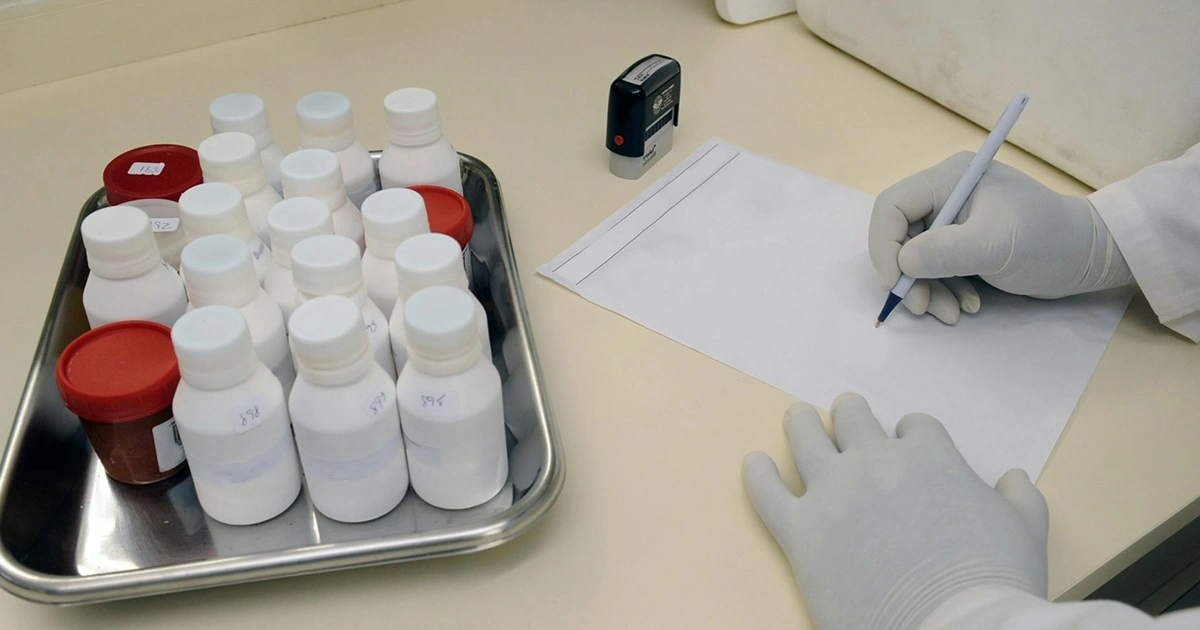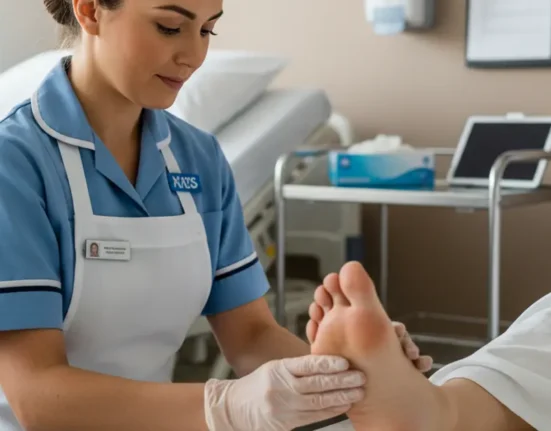Reading the NMC OSCE Hospital Medication Chart correctly during the NMC OSCE Implementation Station is crucial for the safe administration of medications. The NMC OSCE Implementation Station tests your ability to safely and correctly administer prescribed medication. An essential part of this station is accurately reading and interpreting the hospital medication chart. Here’s a practical, step-by-step guide tailored for the OSCE:
1. Understand the medication Chart format
A typical NMC OSCE medication chart has these sections:
- Patient information: Name, DOB, Hospital number, allergy status with reaction, etc.
- Prescription section: Prescribed medications in different sections, like once only, antimicrobial, regular, Oxygen, IV Infusion, PRN)
- Administration record: For recording when medications are administered and by the nurse..
- Prescriber Details: Here, prescriber details are present like name, GMC number sign etc.
- Omission column- If any medication is not administered because of safety reasons, document omission in this column.
2. Start With Patient Details Checks
Before reading the chart:
- Confirm full name, date of birth, and hospital/NHS number, etc.
- Read patient details on all pages of the prescription chart and acknowledge that all pages belong to the same patient details.
- Read and validate the prescriber’s details column and details of the person administering medication (If any nurse has documented details before your administration)
Download Marking Criteria

3. Check for Allergies
- Look for the allergy column with the effect.
- If it states “No known allergies”, proceed.
- If there is an allergy, then one must not administer a medication to which the patient is allergic. Never administer a drug the patient is allergic— this is a critical error.
4. Read Each Prescription Carefully
Go through each medication line-by-line:
| ColumnDate | What to checkEnsure to check the date | |
| Drug name | Ensure to read the medication name. | |
| Dose | Confirm the prescribed dose of medication. | |
| Route | PO (oral), IV, IM, etc. | |
| Frequency | e.g., OD (once daily), BD (twice daily), TDS (3×/day). | |
| Time | Ensure the medication is due for your time. | |
| Prescriber signature and Pharmacy check | Must be signed, and a pharmacy check must be present. | |
5. Identify Which Medications Are Due
Check the time of your NMC OSCE scenario (e.g., “10:00 am”) and determine which medications are due at that time.
- Check if the medication was already given by looking at the administration record. If the relevant column is already signed, the dose has been given — do not repeat it.
- Some medications are given “PRN” – there is no due time for this section. If the patient complains, then check for allergy, overdose, and safe administration.
6. Before Medication Administration
Before dispensing any medications, always check:
- Right medicine
- Right dose
- Ensure no allergy or overdose
- Ensure no alteration to vitals
- Right time
7. Document After Administration
Only document after administering the medication.
- Document the Time given and the signature after administration of the due stat dose.
- Document Date and sign after administration of due antimicrobial and due regular medicines
- Document date, time, and sign after administration of PRN medicines
- Document omission code if any omission, and document on the omitted dose column as well
- Never pre-document a chart before administration.
8. Common Mistakes
- If BP Medications are due for your time, ask for the current BP and HR before administering them
- If Paracetamol is due for your time, confirm the weight is above 50KG before administering.
- Always check for legibility of the prescription.
- Don’t sign before administering the medications.
- Don’t forget to put the correct code on medications not administered.
Reading the hospital medication chart during the Implementation Station with Careful attention to detail, clinical reasoning, and the safety of the patient.
This guide will help you through the key elements of the medication chart and offer practical tips to help you succeed in the NMC OSCE
NMC OSCE For nurses Everything You Need to Know in 2025 Click Here
For Any NMC OSCE Related Queries and Training Chat with Us!














Leave feedback about this